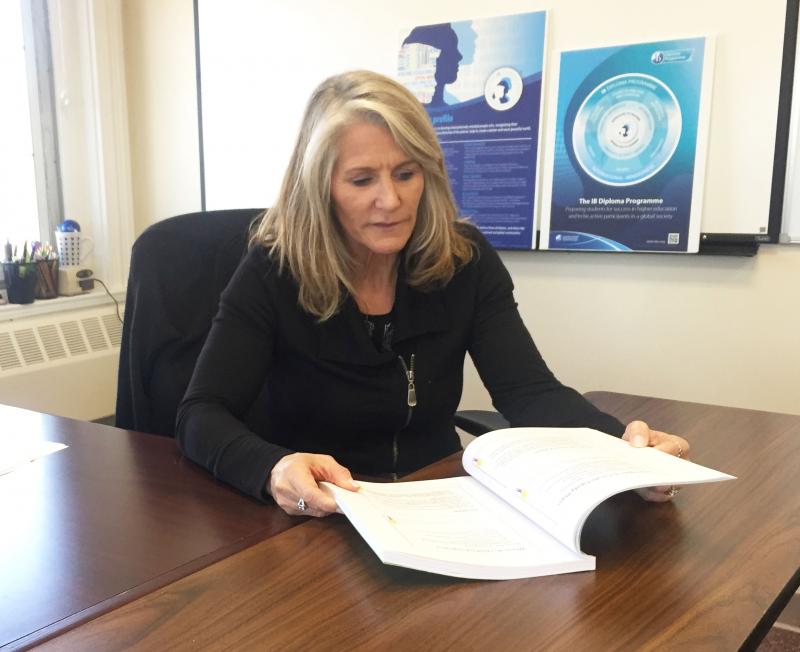Wareham represents at state conference with data on improving literacy
A literacy presentation by a Wareham Public Schools administrator gained interest at a state Title I conference in October, so educators from around the state are asking to visit Wareham to see how the new literacy program works.
Andrea Schwamb, assistant superintendent of Wareham Public Schools, was a presenter at the conference in Marlborough. Title I resources go to schools with high numbers of students from low-income families and Schwamb said the money has helped Wareham do some “amazing transformations” in students’ literacy skills.
Her presentation, “Refusing to ‘Wait to Fail’ Regardless of Income,” gave information on Wareham's literacy data from the last year. Elementary schools in Wareham have been using a new model since February, which looks at research from the last few decades and determines the most successful methods that have been used to improve early student literacy.
They used the research to create a “toolbox of strategies” that can be used depending on a student's needs and learning style, Schwamb said. Teachers can identify a student’s strengths and weaknesses and choose the best way to help him or her.
“It’s very very rigorous, but it’s fun,” Schwamb said. “It doesn’t appear to be hard for kids.”
In the past, programs and tests have determined how classes are taught, she said, and while those are good resources, she believes they’re not the answer.
“State testing has limited our scope,” Schwamb said. “It’s not one size fits all.” And unlike previous methods, it relies on data rather than anecdotes.
“This has been a perplexing issue for a long time,” she said. “We hadn’t found a way that could reach a majority of students.”
In the past, if students were struggling with phonemic awareness, for example, a program would be implemented for that skill. Schwamb said that benefitted the particular group that was struggling, but did not reach all students, since not all students have the same challenges.
"Teaching is complicated and students are unique," Schwamb said. "What we are doing now is carefully considering individual student presentation."
The new model implements personalized strategies based on what each student is having a hard time with, whether it's learning letters or gaining phonemic awareness. Students dance, sing and learn letter sounds, are in guided reading groups and become familiar with sight words on a SMART Board. They move around to different stations within the classroom.
Currently, the new model of teaching reading is in place in kindergarten through fourth grade, but the goal is to only need it in kindergarten, as it will give students a secure foundation in reading skills.
Once the kindergarten students master the skills, “Everybody get ready for them, because they’ll have it,” Schwamb said.
A literacy consultant, Carrie Thurston, has been hired to work in Minot Forest Elementary and John W. Decas Elementary. Thurston has a knack for “reaching even the most resistant kids,” Schwamb said. In 25 days, the students added an average of 25 words of fluency per minute to their reading because there are enough strategies for every learning style.
Gaining literacy skills can be especially difficult for kids in low-income homes, she said, because they have a lack of exposure to reading tools. She said this model has been changing their lives.
Teachers have had to adjust to this since it started in February. They have to work with kids from other classes for periods of time so groups of students can learn with others at their level.
“It’s flexible and fluid, which is freaking people out a little bit,” Schwamb said.
Wareham Public Schools is one of the only districts in the country using this model, but Schwamb said people at the conference who heard her presentation reached out to her and asked to come to Wareham to see the model in action.
“We’re building something that could transfer across the country,” she said.














